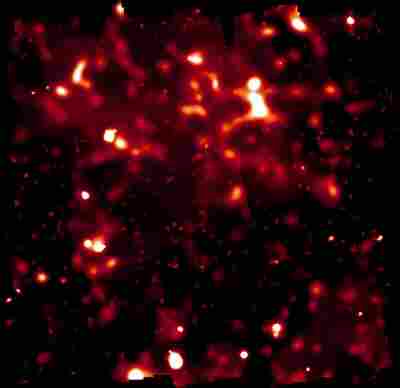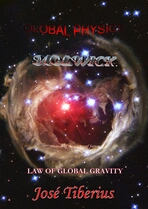3. ENERGY
3.a) Definition and concept of energy
The definition of force that we have adopted is the manifestation at a point in the space of energy, that is, force is energy wherever it expresses. The problem of this definition is that concept of force now depends on the definition of energy.
According to Wikipedia, in Physics, the definition of energy is the ability to do work. ** Besides, there are several definitions of energy depending on different branches of Classical Physics, Relativistic Physics or Quantum Mechanics.

We agree with Wikipedia about an important issue when it says energy is neither an intangible substance nor a real physical system, but a property of said physical systems. The problem with modern science is that classical definitions do not fit entirely with advancements of scientific knowledge, and since an alternative model does not exist, they end up distorted.
Within a context in which new dimensions appear and reality depends on the observer, it is difficult for us to distinguish physical systems from abstract, imaginary or even psychological ones.
In order to clarify the concept, we may say that energy is a property of the reticular structure of matter –kinetic, gravitational or Global Aether.
Another aspect we like is Wikipedia pointing out that different meaning, ideas or definitions of energy relate to the ability to produce motion.
According to Global Physics, an appropriate definition of energy will be precisely the ability to produce motion. First, it does not move the problem to another concept, like the less intuitive definition of work. Secondly, both new energy concept and its manifestation at a point or force are close to the concept of movement.
If force is manifestation at a point of energy, the sum of forces throughout the different points of a displacement will be precisely energy, which coincides with the definition of work in physics. Thus, the concept of work will be a manifestation of energy that has generated a displacement of Global Aether, or displacement of one of its qualities or properties, which may produce movement.
The aim is to achieve a general definition of energy, even though it might modulate for particular cases, to avoid changing the concept of energy when the physical model is not limited to the surface of the Earth, the Solar System or bodies with mass; to mention a few examples.
Nevertheless, new energy definition is not exempt from problems; since it relates to motion, it needs to adapt to each type of motion in Global Physics. In the following section, we will examine the types of energy to verify if persists the idea that energy does not create or destroy, only transforms.
After that, we will go into the analysis of kinetic energy, gravitational potential energy and mechanical energy in depth, taking into account the Merlin effect.
[ ¿ ]
Main problem of energy concept is its physical dimensions; we consider that necessary energy to keep acceleration of a mass throughout space depends on the initial situation and on the spatial orientation of movement regarding the natural reference system.
In other words, current dimensions of energy do not allow defining a single or objective unit of energy. Current dimensions should include the physical context. At least, said context should contain the gravity and velocity conditions or, even better, a physical situation at rest within its natural or privileged frame of reference.
It is somehow similar to the concept of time. The definition of second, as the unit of time, is relative since gravity and velocity conditions of cesium atom can differ.
Global Physics did not highlight this issue. Earlier in time, Einstein showed that Newton’s Second Law or Force Law was not exact in regards to relativistic mass. However, Special Relativity far from resolving the problem makes it worse. Instead of establishing a privileged system, it does the opposite: denies the existence of a privileged frame of reference while setting it, without recognizing, with his General Relativity.
Likewise, General Relativity, instead of bringing a unit to energy definition, destroys all objective units of the International System of Units (SI).
Using the example of the puzzle again, we would say that, if the physical reality had a three-dimensional egg-shaped, the General Relativity would achieve to make it look like a cube with continuous transformations of units of almost all magnitudes. On the one hand, the axiom of the constant and maximum speed of light reduces one dimension, but when making relative space and time units add two physical dimensions.
It is better not to imagine the impact on the definition of energy if the mass depends on the observer and if space and time are relative. General Relativity will possibly achieve some pieces of the puzzle, but with artificially altered pieces, it will be impossible to complete, and visible part of the puzzle will have some distortion.
The other big branch of Modern Physics, Quantum Mechanics like a bit too many probabilities, additional dimensions and time traveling to modulate the pieces, and try to solve the puzzle. Moreover, if any of the pieces are too strange, they could send them to the parallel word.
The result of a physical model using inadequate concepts of essential magnitudes, such as energy, is the unfeasibility to complete the puzzle, and some parts of the model will be incompatible with each other. At least, that will be the case of General Relativity and Quantum Mechanics.
